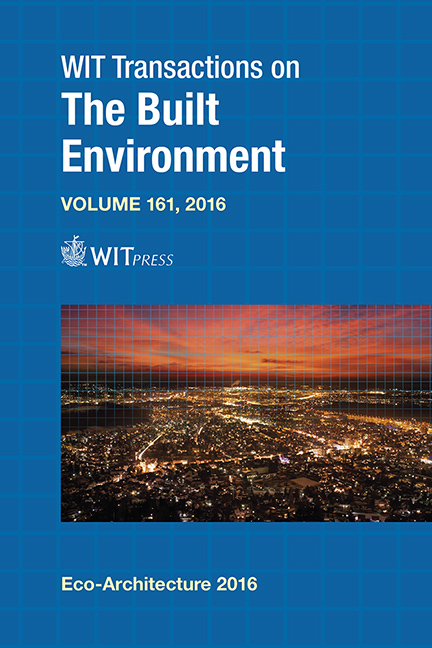Architectural Qualities Of Danish Office Buildings Built Between 1960 And 1980, Seen In A Contemporary Sustainable Perspective
Price
Free (open access)
Transaction
Volume
161
Pages
12
Page Range
119 - 130
Published
2016
Paper DOI
10.2495/ARC160111
Copyright
WIT Press
Author(s)
L. Hannoudi, M. Lauring, J. Christensen
Abstract
This study is about evaluating the past and present architectural quality of office buildings built between1960 and 1980 in Denmark. The evaluation will focus on the expression of these buildings in relation to their context, combined with the present sustainable performance of the buildings and their critical problems.
The initial method is a historical study to define the originally intended architectural quality of the office buildings and the different aspects related to this quality. The architectural quality is studied in relation to the societal and technological processes that characterized this period, with special focus on industrialization and its impact on the design process, particularly in adopting rational and economic solutions.
When evaluating the buildings in a contemporary, sustainable perspective, the designer faces many problems. These include: economic problems due to high energy consumption; comfort problems due to bad indoor climate; and environmental problems due to the use of construction materials with a negative impact on the environment. Site visits show that these buildings are facing many characteristic constructional and aesthetic problems regarding material durability, mould and fungus, and lack of tightness.
The analysis of the originally intended architectural quality combined with current constructional, sustainable and aesthetic evaluation forms the basis for a discussion on the possibilities of implementing sustainable solutions in the office buildings. This implementation will have an impact on the aesthetic output, and the concepts of possible contemporary architectures are highlighted.
Keywords
architectural quality, sustainable performance, modernism, industrialization, environment, aesthetic aspects, economic, comfort problems, durability and rationality





